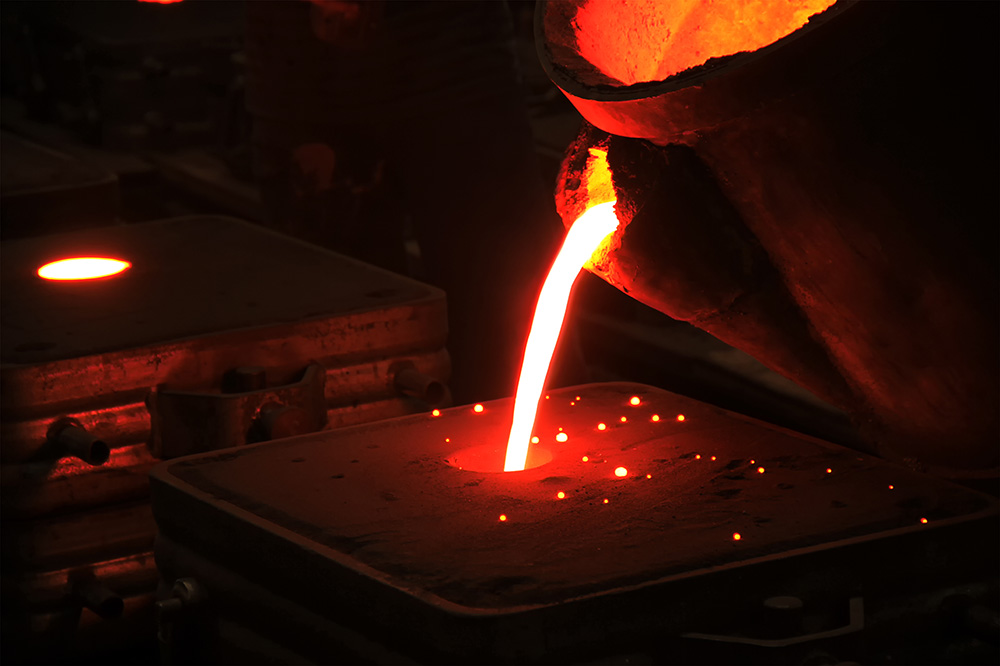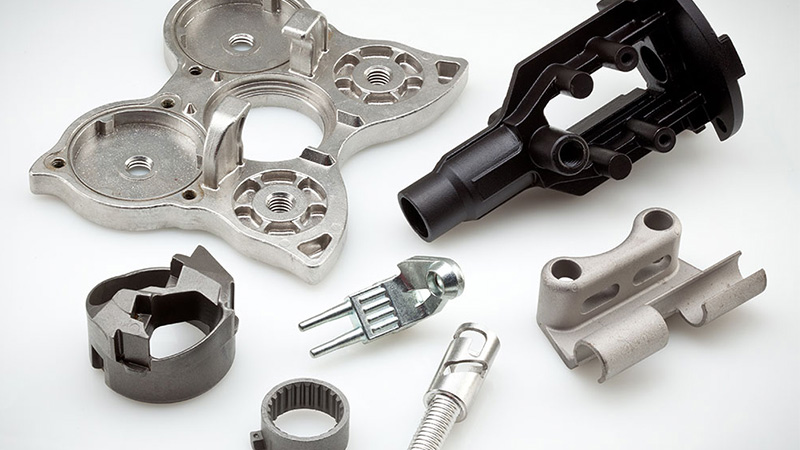The Duty of Metal Casting in Advancing Production Technologies
Metal Casting have significantly affected the evolution of manufacturing technologies. They supply distinct design flexibility, allowing the creation of intricate geometries important for numerous applications. Modern casting strategies are being improved by technologies like 3D printing and automation. These developments not just improve performance but additionally address challenges in precision and sustainability. As sectors continue to progress, the role of Metal Casting stays essential fit their future. What exists ahead in this dynamic area?
The Development of Steel Casting Techniques
As the need for accuracy and efficiency in production has actually expanded, the development of Metal Casting strategies has gone through substantial change. Historically, Metal Casting started with easy methods such as sand casting and lost-wax casting, which enabled artisans to produce detailed forms. Over time, improvements in modern technology presented procedures like die spreading and financial investment spreading, boosting precision and decreasing waste. Wisconsin Aluminum Foundry. The introduction of computer-aided layout (CAD) and simulation software program reinvented the drawing board, making it possible for suppliers to prepare for potential problems and enhance styles prior to manufacturing. In addition, the advancement of new products, such as sophisticated alloys and compounds, has actually expanded the scope of applications for Metal Casting. Automation and robotics have more polished spreading processes, boosting uniformity and effectiveness. Therefore, the Metal Casting market has adapted to meet the demands of modern-day manufacturing, concentrating on sustainability and development to remain affordable in an ever-evolving industry
Applications of Metal Casting in Trick Industries
The advancements in Metal Casting techniques have actually opened a large range of applications across various industries. In the automotive field, Metal Casting are indispensable for creating engine blocks, transmission housings, and various other crucial parts that need high strength and longevity. The aerospace industry uses castings for detailed parts like wind turbine blades and architectural elements, making certain lightweight yet durable services for airplane.

Additionally, the building and construction sector employs Metal Casting for structural aspects such as installations and beam of lights, adding to the honesty of buildings and framework. In the energy market, spreadings play an important role in manufacturing elements for wind turbines and power generation equipment, improving performance and reliability. In enhancement, the medical area benefits from accuracy castings used in medical tools and prosthetics, demonstrating the convenience of Metal Casting across diverse applications. This broad utilization highlights the relevance of Metal Casting in contemporary production techniques.
Advantages of Metal Casting in Modern Manufacturing
Metal Casting supply many advantages that greatly enhance modern manufacturing procedures. One vital advantage is style versatility; Metal Casting permits the creation of complicated forms and intricate geometries that are frequently hard or impossible to achieve with various other making methods. This capability makes it possible for producers to maximize item designs for capability and performance.
Additionally, Metal Casting can sustain a large range of products, including aluminum, iron, and steel, which can be customized to satisfy specific mechanical residential or commercial properties and deterioration resistance demands.

Cost-effectiveness is an additional remarkable advantage; Metal Casting processes can produce big quantities of components with very little material waste, thus decreasing production expenses.
The longevity of actors metal components adds to the durability of items, reducing the demand for regular substitutes. In general, the benefits of Metal Casting considerably contribute to performance, sustainability, and innovation within modern production settings.
Developments Driving the Future of Metal Casting
While conventional Metal Casting techniques have actually offered the industry well for years, current technologies are positioned to transform the area. Advances such as 3D printing modern technology enable rapid prototyping and the production of complicated geometries that were formerly unattainable. These innovations not just enhance style adaptability however likewise lower waste and shorten preparations. Additionally, the combination of automation and robotics in casting processes is simplifying operations, improving accuracy, and boosting employee security. The growth of composite materials and brand-new alloys is making it possible for the production of stronger, lighter castings customized for certain applications. Digital technologies, consisting of expert system and equipment knowing, are maximizing spreading criteria and predictive upkeep, driving enhanced quality control. Jointly, these advancements are pressing the boundaries of Metal Casting, fostering greater performance and sustainability in production, and placing the sector for future growth and competition.
Obstacles and Solutions in Metal Casting Processes
As developments in Metal Casting innovation remain to improve the market, numerous obstacles stay that makers need to address to completely leverage these advancements. One substantial concern is the variability in product homes, which can bring about inconsistent quality and efficiency. This irregularity commonly arises from changes in resources and processing conditions. In addition, the increasing prices of power and products present monetary restraints, pushing makers to look for more effective published here processes.
To combat these obstacles, firms are significantly taking on automated systems and progressed simulation methods to boost precision and consistency. Executing quality control measures throughout the production process likewise aids in detecting flaws early. Investing in research study for alternate products may enhance and decrease expenses sustainability. By resolving these difficulties with ingenious options, the Metal Casting sector can improve performance and maintain competitiveness in the right here advancing production landscape.
Frequently Asked Questions
What Materials Are Frequently Made Use Of in Metal Casting Procedures?
Usual products used in Metal Casting procedures consist of light weight aluminum, bronze, iron, and magnesium. Each material has special properties that deal with different applications, improving the adaptability and performance of the last cast products in numerous markets.
How Do Ecological Laws Impact Metal Casting Workflow?
Environmental laws compel Metal Casting operations to embrace cleaner practices and innovations, typically raising production prices. Conformity might bring about cutting-edge processes that decrease waste and emissions, ultimately advertising sustainability within the Metal Casting industry.
What Are the Safety Procedures in Metal Casting Facilities?
Precaution in Metal Casting centers include proper air flow, personal safety equipment, routine safety training, tools maintenance, and adherence to security regulations, guaranteeing a secure setting for workers while minimizing dangers connected with unsafe products and procedures.
Just How Is Quality Controlled in the Metal Casting Refine?
Quality control in Metal Casting includes rigorous evaluations, including visual analyses, dimensional checks, and material testing. Adherence to sector criteria and executing high quality management systems ensures that castings satisfy specified requirements throughout the manufacturing process.
What Is the Future Task Outlook for Metal Casting Professionals?
The future task outlook for Metal Casting experts appears appealing, driven by improvements in technology and enhancing need throughout numerous markets (Aluminum Foundry). Development in automation and lasting techniques will likely produce brand-new possibilities in this sector
Historically, Metal Casting started with simple methods such as sand casting and lost-wax spreading, which allowed artisans to produce complex forms. Over time, innovations in modern technology presented processes like die spreading and financial investment casting, boosting accuracy and check this reducing waste. In addition, the medical field benefits from precision spreadings made use of in surgical tools and prosthetics, showing the convenience of Metal Casting throughout varied applications. Metal Casting use countless advantages that considerably enhance contemporary manufacturing processes. Usual products used in Metal Casting procedures include light weight aluminum, iron, magnesium, and bronze.